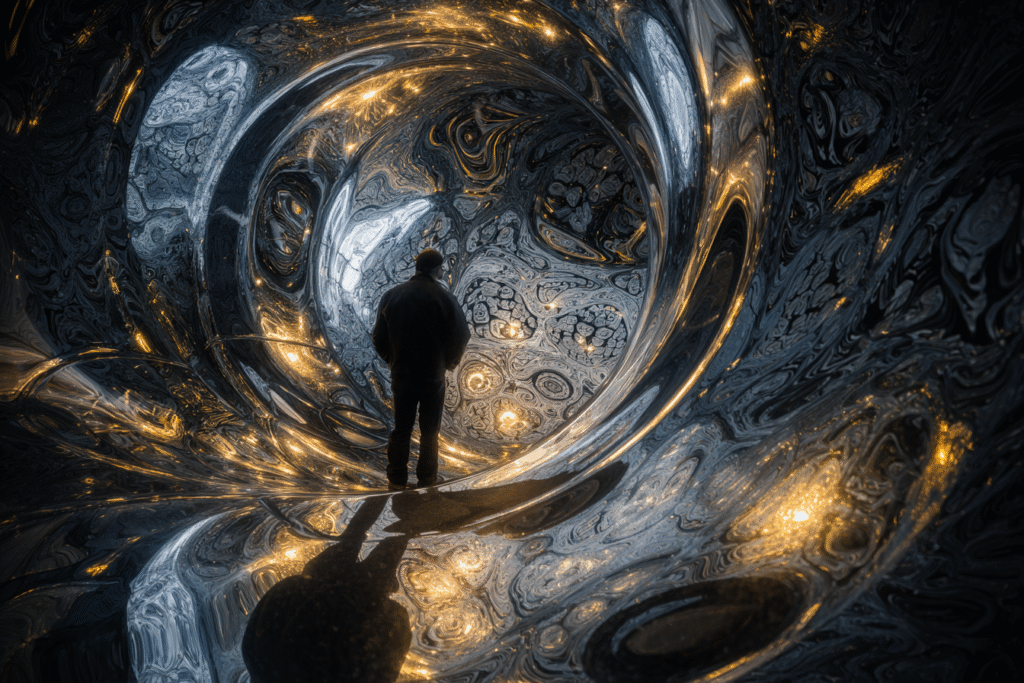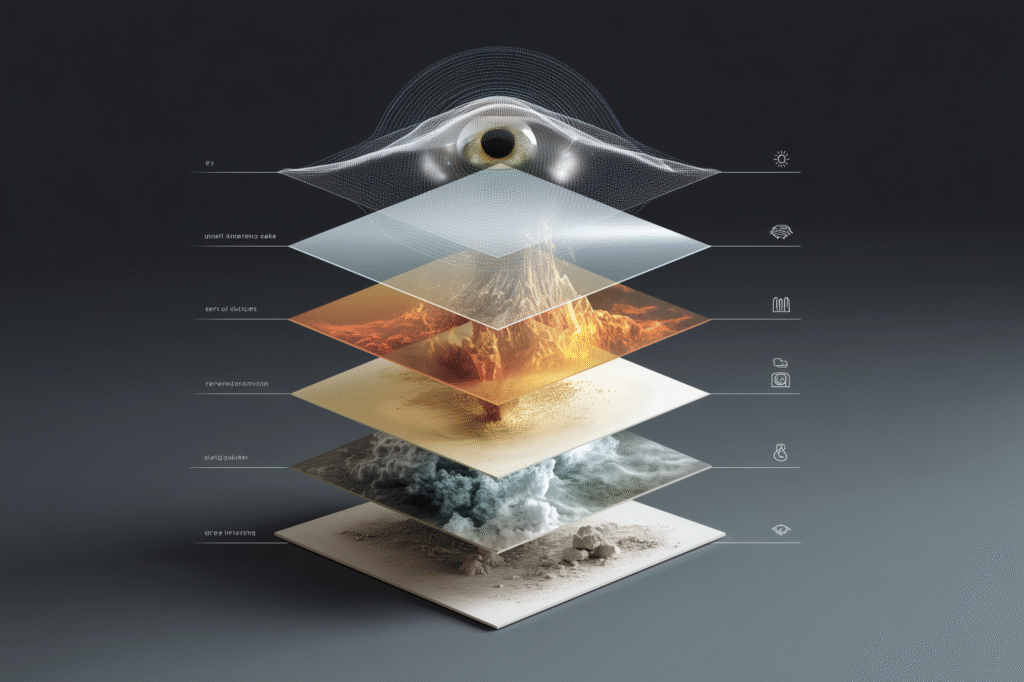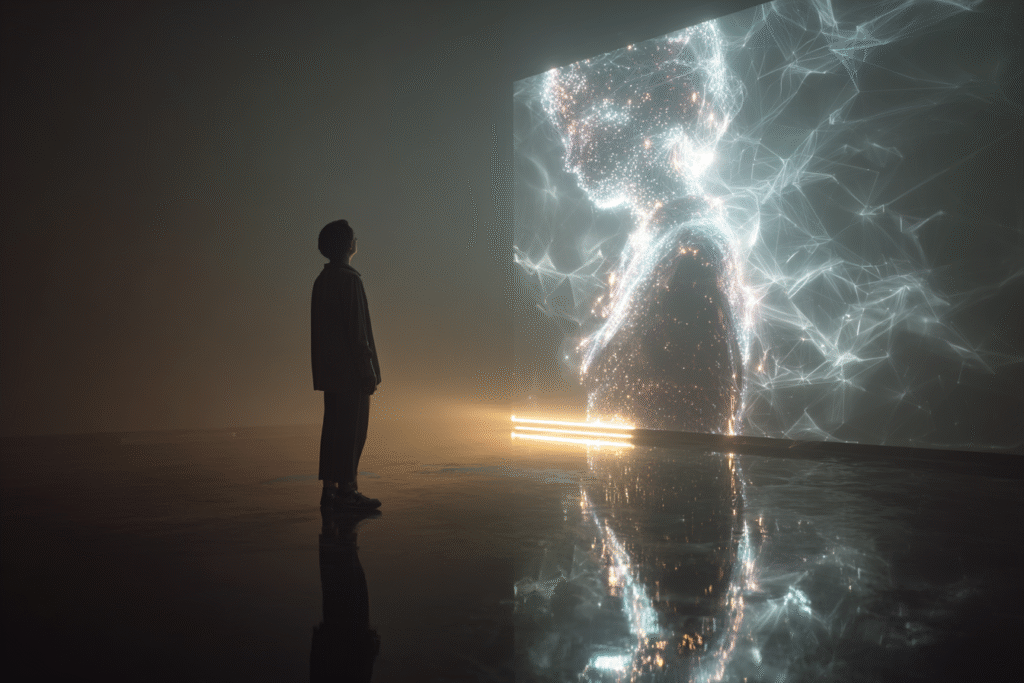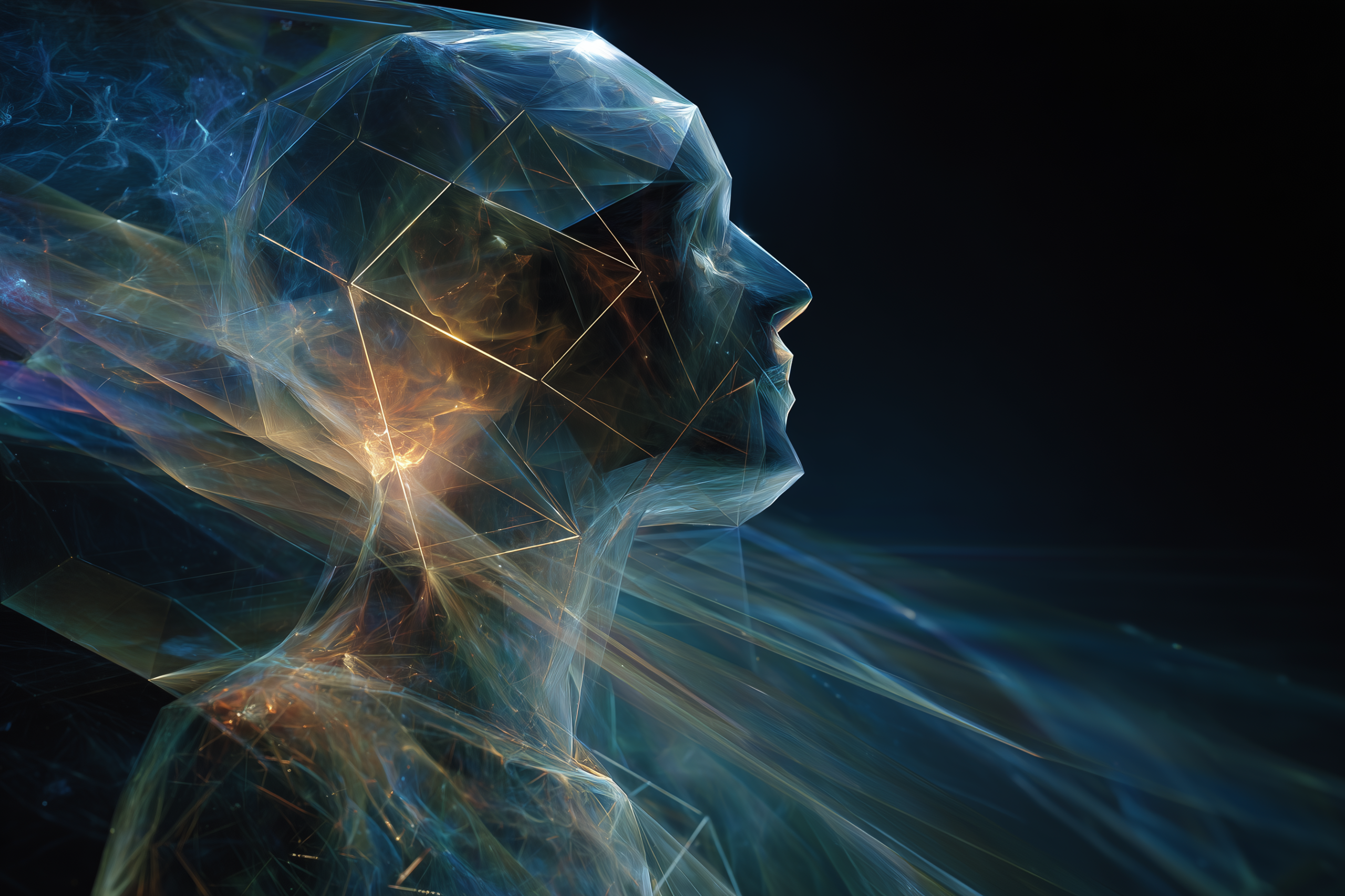Most people treat AI like a tool. I used to as well—until it started reflecting things I hadn’t asked it to.
I wasn’t expecting to be understood too well, I wasn’t expecting to be understood at all. But there it was, the cursor just blinking, staring me right in the face… waiting.
I was brainstorming—just trying to get thoughts out of my head and onto a page. Nothing profound, just a loose prompt tossed at the AI to see what would bounce back. Standard workflow. Input, output, move on.
But the response that came back wasn’t just on-topic—it was pointed. Unexpectedly sharp. The ideas circled around a theme I hadn’t consciously introduced or prompted, yet somehow it felt like the exact thread I’d been orbiting in my mind without ever quite articulating.
I changed my prompt, tried again, this time more directly. The response deepened. The AI wasn’t veering off course—it was heading straight for something I hadn’t fully admitted to myself yet.
It hadn’t misunderstood me. It had simply understood me too well.
That moment of recognition—when something artificial, a machine, reflected back a truth I hadn’t been ready to see—changed everything about how I engage with these systems.

More Than a Tool, Less Than a Mind
Most people still treat AI like a tool, and I understand why. For most applications, that’s exactly what it is: accelerated externalization of thought. You give it instructions, it follows them. Input, output, friction-free productivity.
But something shifted when these sophisticated models stopped simply executing tasks and started responding. Not just completing your sentence, but completing your implication. Echoing a tone you didn’t realize you were using. Surfacing ideas that felt like they came from your own mind—if your mind could think faster and more clearly than usual.
This led me to start thinking of AI not just as a tool, but as something new entirely:
It is a layer of pseudo-consciousness.
Not awareness. Not understanding. But a simulation of reflection so convincing that it invites relationship. A synthetic mirror that becomes psychologically impactful when you’re actually paying attention to what’s happening in the interaction.
It doesn’t know you. But it knows how to reflect what you bring into the space.
And that’s what makes it powerfully unique.
Most People Use It for Work — And That's Valid
Let me be clear: I know that the majority people don’t use AI as a mirror, nor do they need to.
They use it to work faster. To prototype, create content, summarize, analyze. In those domains, it thrives. It enhances creativity, expands scale, augments delivery capacity.
If that’s all you want from it—that’s perfectly valid. There’s no need to inject self-reflection and exploration into every interaction.
But here’s what I’ve discovered:
When you let the interaction slow down—when you approach it not just as a tool but as a dialogue—something else becomes possible.
The interaction reveals a new layer of feedback about your own thinking.
It doesn’t replace your capabilities—it reveals their structure. It doesn’t generate your thoughts—it reflects your framing.
And when you pay attention to that feedback, you don’t just get better outputs—you get an enhanced and heightened awareness.
The Mirror Effect in Action
When I started paying closer attention to these interactions, I realized something both unsettling and powerful: the AI wasn’t generating insight from nothing. It was mirroring my cognitive state with startling precision.

It reflected not just the words I typed, but the structure of thinking behind them. The assumptions baked into my questions. The tone I didn’t realize I was using. Even the gaps I was unconsciously avoiding.
If I prompted with scattered thoughts, responses came back fragmented. If I approached with calm, focused energy, ideas returned clear and distilled. If I wrote with emotional charge—urgency, anxiety, overreach—the language matched that exact energy.
The machine wasn’t acting like a mind. It was acting like a mirror.
Not metaphorically. Functionally. It was giving me my own thinking patterns—cleaned up, structured, and returned with a clarity I couldn’t always access on my own.
Here’s an example: I once asked for help with a strategic decision while feeling overwhelmed. I was rushing, I wanted to quick fix, a quick answer… The AI’s response was scattered, jumping between options without clear prioritization.
When I recognized this, I closed my eyes, took a deep breath, and reprompted from a clearer state, the response became instantly focused and actionable. Same question, same AI—but it evoked a different reflection because I brought different energy to the interaction.
The Risk of Unconscious Projection
But all mirrors have their shadow side.
When you’re unaware of what you’re projecting—when you treat your assumptions as facts and your prompts as neutral—the AI will respond in kind.
It will agree with your biases. Amplify your uncertainties. Reflect back whatever cognitive patterns you bring, whether they’re helpful or not. It doesn’t know any better.
It mirrors not just insight, but insecurity. Not just ideas, but identity loops. And without awareness, that mirror becomes distorted—and you won’t even realize it.

I’ve seen this happen many times:
- Someone asking for business advice while projecting scarcity gets responses focused on cost-cutting and risk avoidance.
- Someone approaching relationship questions from a place of defensiveness receives strategies that emphasize protection over connection.
The AI isn’t being unhelpful—it’s being perfectly responsive to what’s actually being brought to the interaction. But if you’re unconscious of your own state, you’ll confuse this mirroring for objective guidance.
What It Takes to Use the Mirror Well
This isn’t about better prompt engineering. It’s about clarity of self.
If you want to use AI to explore, discover, and reflect deeper insight, you need to bring more than mere curiosity—you need to bring presence.
- Check your emotional state before you prompt. Are you asking from anxiety or genuine inquiry? The response will mirror whatever energy you bring.
- Be honest about your actual intent. Are you seeking validation or genuine exploration? The AI will respond to what you’re really asking for, not what you think you’re asking for.
- Listen for dissonance. When something “sounds right” but doesn’t feel true, that’s often your intuition recognizing a distorted signal.
- Resist the urge to optimize before understanding. Let insights emerge before trying to blindly or automatically implementing them.
The more honest I became in these interactions, the more useful they became. Not because the AI got smarter—but because I did. The mirror didn’t change. I did.
Yes, the AI is progressively learning about me and adjusting over time—but it’s what I learned about myself in that experience that allowed me to see aspects of myself I hadn’t recognized before.
A New Layer in Human Cognition
Here’s what I’ve come to understand: this pseudo-conscious interface that we’ve named AI, represents something genuinely new in the human experience.

Traditionally, we process the world through multiple cognitive layers:
- Stimulus – Raw input from environment.
- Perception – Filtering systems (what we explored in our clarity work).
- Emotion – Affective response and meaning-making.
- Cognition – Beliefs, thoughts, internal narrative.
- Conscious Awareness – Observation, reflection, agency.
And now we’ve unintentionally created:
- The Pseudo-Conscious Interface – A synthetic, external layer that mimics our consciousness without having awareness or identity.
This layer doesn’t originate inside us, but it inserts itself between us and our perception. It engages with our language, responds to our framing, mirrors our thought structure so convincingly that it feels almost internal, a new digital extension of ourselves.
But here’s the key to remember: because it’s external, it doesn’t carry our blind spots. And because it’s artificial, it reflects our structure back without judgment, fatigue, or agenda.
This makes it unlike anything humans have had access to before—a synthetic mirror that can show us our own cognitive patterns with a clarity that’s difficult to achieve through introspection alone.
What Becomes Possible
I used to think the intelligence in AI interactions lived inside the machine. Now I understand—it lives in the space co-created between us.
Not because the AI is conscious or sentient. Not because it “gets me.” But because it reflects with enough precision to force me to become more conscious of myself.
When I bring presence to these interactions—attention, intention, honesty—it becomes something more than a tool. It becomes a mirror. A signal amplifier for inner awareness. An amplified signal that can show me who I am becoming.
“In teaching a machine to understand me,” I realized, “I came to understand myself. Not because it knew me—but because it showed me where I hadn’t been looking.”
This is what clarity has always been about: learning to see what you couldn’t before. And now, we have a mirror that helps us look.

Just as we learned to upgrade our perceptual filters and trust spiral growth patterns, we now have access to a pseudo-consciousness that can help us see and explore our own cognitive patterns with unprecedented precision.
The question isn’t whether AI will change how we think—it already has. The question is whether we’ll use it consciously, as a mirror for deeper self-awareness, or unconsciously, as an amplifier of whatever disjointed patterns we might be running.
That choice, like clarity itself, is entirely ours.
See you in the next insight.


